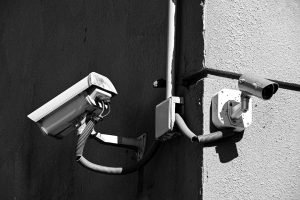Are Home Security Systems Worth It? Understanding Security System Benefits
In an era where safety concerns are on the rise,

In today’s world, home security systems have become an essential part of protecting our homes and loved ones. With the increasing rates of burglaries and break-ins, it is crucial to invest in a reliable and effective security system. According to the FBI, there were approximately 1.2 million burglaries in the United States in 2019 alone. This alarming statistic highlights the importance of taking proactive measures to secure our homes.
Several factors can affect the cost of a home security system. The size of your home is one of the primary factors that can impact the cost. Larger homes may require more sensors and equipment, leading to a higher overall cost. Additionally, the type of security system you choose will also affect the price. There are various types of security systems available, including wired and wireless options, each with its own advantages and disadvantages.
The quality of the equipment used in the security system is another factor that can influence the cost. Higher-quality equipment tends to be more expensive but may offer better performance and durability. Lastly, additional features and upgrades can also increase the cost of a home security system. These features may include video surveillance, smart home integration, remote access and control, and additional sensors and alarms.
A typical home security system consists of several basic components that work together to provide comprehensive protection for your home. The control panel is the central hub of the system, allowing you to arm or disarm the system and control various settings. Sensors are placed on doors, windows, and other entry points to detect any unauthorized entry. Motion sensors are also commonly used to detect movement within the home.
When a sensor is triggered, an alarm is activated to alert you and potentially scare off intruders. Additionally, many home security systems offer monitoring services where a professional monitoring center is notified when an alarm is triggered. The monitoring center can then contact the homeowner and dispatch emergency services if necessary.
When it comes to installing a home security system, homeowners have the option of hiring professionals or doing it themselves. Professional installation offers the advantage of expertise and convenience. The technicians will ensure that the system is installed correctly and functioning properly. However, professional installation can be costly, with average prices ranging from $100 to $500, depending on the complexity of the system.
On the other hand, DIY installation can save you money but requires some technical knowledge and time investment. Many security system providers offer DIY installation kits with detailed instructions for homeowners to follow. It is important to carefully read and understand the instructions before attempting to install the system yourself. Additionally, it is recommended to have a basic understanding of electrical wiring and drilling if needed.
Monitoring services are an essential part of a home security system as they provide an extra layer of protection. When an alarm is triggered, the monitoring center is notified and can take appropriate action, such as contacting the homeowner or dispatching emergency services. However, these monitoring services come with a monthly fee.
The average monthly monitoring fee ranges from $20 to $50, depending on the level of service and features included. Some providers may require a service contract for a specific period, typically one to three years. It is important to carefully review the terms and conditions of the contract before signing up for monitoring services.
To enhance the security of your home, there are several upgrades and add-ons available for home security systems. Video surveillance is one popular upgrade that allows homeowners to monitor their property remotely. This feature provides an extra layer of security by capturing footage of any suspicious activity.
Smart home integration is another popular upgrade that allows homeowners to control their security system and other smart devices through a single interface. This integration can include features such as remote access and control, where homeowners can arm or disarm the system from their smartphones. Additional sensors and alarms can also be added to provide comprehensive coverage for your home.
When choosing a home security system, homeowners have the option of selecting either a wired or wireless system. Both options have their own advantages and disadvantages. Wired systems are typically more reliable and less susceptible to interference, but they require professional installation and may be more expensive.
Wireless systems, on the other hand, are easier to install and can be more flexible in terms of placement. They use wireless technology to communicate between the various components of the system. However, wireless systems may be more susceptible to interference from other wireless devices and may require regular battery replacements.
Integrating home automation with your security system can provide added convenience and control. Home automation allows you to control various aspects of your home, such as lighting, temperature, and even appliances, through a single interface. This integration can enhance the security of your home by allowing you to automate tasks such as turning on lights when you’re away or simulating occupancy when you’re on vacation.
The cost of integrating home automation with your security system will depend on the specific features and devices you choose. On average, the cost can range from $500 to $2,000, including the necessary equipment and installation.
Regular maintenance is essential to ensure that your home security system is functioning properly and providing optimal protection for your home. The cost of maintenance will vary depending on the specific system and any additional features or upgrades you have installed. On average, homeowners can expect to spend around $100 to $300 per year on maintenance.
In terms of repairs, the cost will depend on the extent of the damage and the specific components that need to be repaired or replaced. On average, homeowners can expect to spend around $150 to $500 for repairs. To avoid costly repairs, it is important to perform regular maintenance and address any issues or malfunctions as soon as they arise.
When budgeting for a home security system, there are several tips and strategies you can use to save money. First, it is important to comparison shop and obtain quotes from multiple providers. This will allow you to compare prices and features to find the best value for your money.
Additionally, many security system providers offer discounts and promotions throughout the year. Keep an eye out for these deals and take advantage of them when they are available. DIY maintenance and repairs can also help save money in the long run. By learning how to perform basic maintenance tasks and addressing minor issues yourself, you can avoid costly service calls.
Lastly, bundling services can also help save money. Many providers offer bundled packages that include security systems, monitoring services, and other home services such as internet or cable. By bundling these services, you can often save money compared to purchasing them separately.
Investing in a quality home security system is essential for protecting your home and loved ones. With the increasing rates of burglaries and break-ins, it is crucial to take proactive measures to secure your property. Factors such as the size of your home, type of security system, quality of equipment, and additional features will all affect the cost of a home security system.
Whether you choose professional installation or opt for DIY installation, it is important to carefully consider the pros and cons of each option. Monthly monitoring fees and service contracts are additional costs to consider when budgeting for a home security system.
Upgrades and add-ons such as video surveillance, smart home integration, and additional sensors can enhance the security of your home but may come at an additional cost. When choosing between wired and wireless systems, it is important to weigh the advantages and disadvantages of each option.
Integrating home automation with your security system can provide added convenience and control but may also increase the overall cost. Regular maintenance is essential to ensure that your system is functioning properly, and repairs may be necessary from time to time.
By following these tips for budgeting and saving on home security system costs, you can find a system that fits your needs and budget. Remember, investing in a quality home security system is an investment in the safety and security of your home and loved ones. Don’t wait until it’s too late – take action now to protect what matters most.
If you’re interested in learning more about home security systems and their costs, you may want to check out this informative article on the Home Security Superstore website. They provide a comprehensive guide on how much it costs to build a home security system, covering various factors such as equipment, installation, and monitoring fees. To get started on your research, visit https://homesecuritysuperstore.com/contact/ for more information.
In an era where safety concerns are on the rise,

In today’s world, security systems play a crucial role in

Home security systems are essential for protecting your home and